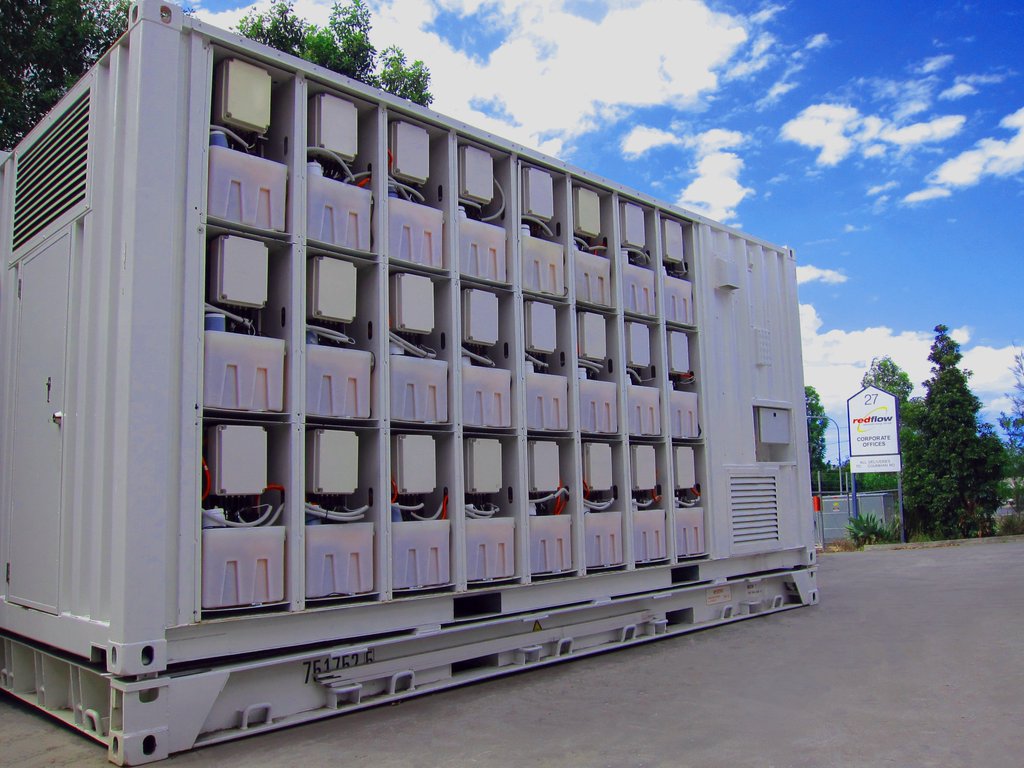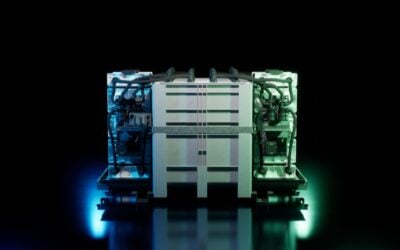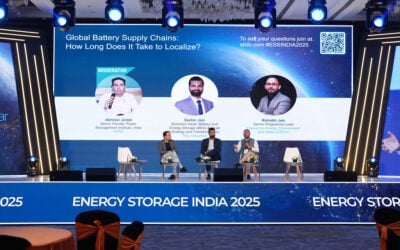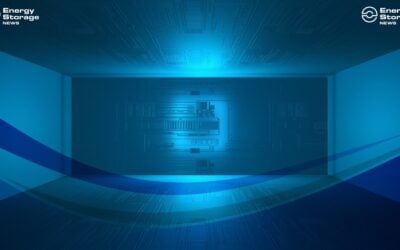
Over the past couple of weeks, various flow battery makers have touted new sales and supply chain agreements as the fledgling sector fights for a share of the stationary energy storage market.
Following the deployment of a 1MWh unit in the south west of England, British ‘flow machine’ maker RedT said that it had received an order for nine devices to an unnamed customer in Southeast Asia.
That order adds up to 0.6MWh of RedT energy storage systems, comprised of four units of 30kW / 150kWh and one 5kW / 20kWh system. The storage will be grid-connected, performing a “range of services” and serving as “flexible platform assets”, the company said.
Try Premium for just $1
- Full premium access for the first month at only $1
- Converts to an annual rate after 30 days unless cancelled
- Cancel anytime during the trial period
Premium Benefits
- Expert industry analysis and interviews
- Digital access to PV Tech Power journal
- Exclusive event discounts
Or get the full Premium subscription right away
Or continue reading this article for free
Vertical integration of supply chain
Also in the past few days, a US energy storage start-up, StorEn, which is developing vanadium flow energy storage systems, announced it had brokered a supply chain deal with an Australian mining company, Multicom Resources.
The agreement is intended to create a “vertically integrated supply chain model” relating to the sale, distribution and manufacturing of StorEn’s Vanadium Flow Batteries (VFBs). StorEn claims an energy density improvement of 25% over rival flow systems. It also says designs for which the company has patents pending could cut costs in half for the “power side” of the battery and also extend system lifetime to 15,000 cycles.
Multicom is developing a vanadium pentoxide mining operation in Queensland. Once this is operational, the agreement allows StorEn to source raw materials at a “low cost” fixed price. In return Multicom has exclusive rights to sales and distribution of the finished systems, via its subsidiary Freedom Energy. The two companies also have the option to acquire equity interest in one another, while StorEn will also supply trial units to Multicom for testing under pilot schemes in the Asia-Pacific region.
Pivoting from a prior interest in fuel cells, StorEn said it is aiming its vanadium systems at markets for telecommunications, industrial and perhaps surprisingly, residential energy storage.
Titanium electrode supply deal for Primus
US manufacturer Primus Power, which makes flow energy storage systems around zinc bromide chemistry and has installed a demonstration unit at the headquarters of Microsoft, has just inked an electrode supply deal.
The company’s supply partner De Nora announced via the North American Clean Energy magazine website that it is “deepening” a relationship with Primus built on five prior years of research and commercialisation.
De Nora’s titanium electrodes will be specially adapted and modified for use in the energy storage systems. The company has eight existing sites for making the electrodes around the world, including a new North American site currently under construction.
“Almost everybody else uses a graphite electrode. Graphite is great, inexpensive, it’s electrically conductive. The problem with graphite is that it changes composition over time. You have a slow CO2 corrosion and performance at year three is different to performance in year one,” Primus Power CEO Tom Stepien told Energy-Storage.News.
“We started out life with a graphite electrode and we saw that, so we moved to titanium. Titanium is more expensive on a weight basis, but actually less expensive on an energy basis – and that’s what you pay for.”
Primus Power last week sold a 25kW / 125kWh unit to Washington utility Puget Sound, for installation at an unnamed solar and wind facility on a commercial basis, although locational and economic analysis was part-funded by the government Department of Energy. That system “helps manage the building’s loads throughout the day”, Stepien said.
Vanadium miners seek to exploit potential
Several other announcements have been made regarding vanadium mining and potential supply deals for the energy storage industry, varying in size, scale and occasional credibility. Most recently, Canadian mining company Anfield Resources said yesterday that it is “placing increasing emphasis on the vanadium potential” of its Velvet-Wood Mine in Utah, USA.
Anfield has employed BRS Engineering to create a resource report in the next six to eight weeks. Anfield claims that the site has the “potential to be a significant source of vanadium”.
“Vanadium is increasingly being embraced by battery manufacturers as a core material in the production of batteries to be used in both small-scale and large-scale applications; in fact, vanadium redox-flow batteries (VFBs) have started to grow in influence as energy companies look to improve energy storage,” Anfield CEO Corey Dias said.
Elsewhere, South Africa’s first vanadium energy storage trial is set to go ahead at a testing facility for state grid operator and utility Eskom. Developer and technology supplier Bushveld Minerals’ via its Bushveld Energy subsidiary, will install a 120kW / 450kWh system at Eskom’s Research, Testing and Development (RT&D) Centre in Rosherville. The system will be supplied by UniEnergy Technologies (UET), housed in a 20ft container. Eskom will use testing on the system to demonstrate the viability of grid-scale energy storage. Earlier this year Eskom assessed that South Africa is likely to need 2,000MW of energy storage capacity daily to balance its existing grid network. Bushveld Minerals announced the project to the London Stock Exchange yesterday.
These recent announcements appear to some extent to be dwarfed by activities in the flow battery space in China. Two recently announced projects in Hubei and Dalian are sized at 100MW / 500MWh and 200MW / 800MWh respectively, with the government aiming for a strategic push to deploy the technology for renewables integration. At present, the largest redox flow energy storage system in the world is a 15MW / 60MWh project in northern Japan, supplied and integrated by Sumitomo Electric.
Overall, flow battery energy storage systems hold about a 5% share of the stationary storage market in the US, according to GTM Research’s most recent figures, while lithium takes around 95% and lead acid around 0.5%.




![burns and mcdonnell GA_Battery_Storage_003[84] The maturing industry has allowed EPCs to "get more creative with engineering technology and construction equipment to help streamline operations in the field," Julian Hoover says. Image: Burns & McDonnell](https://www.energy-storage.news/wp-content/uploads/elementor/thumbs/burns-and-mcdonnell-GA_Battery_Storage_00384-rgklnp65oz5okwj4j525f5bdz9y57j338jh6zpqdvo.jpg)
